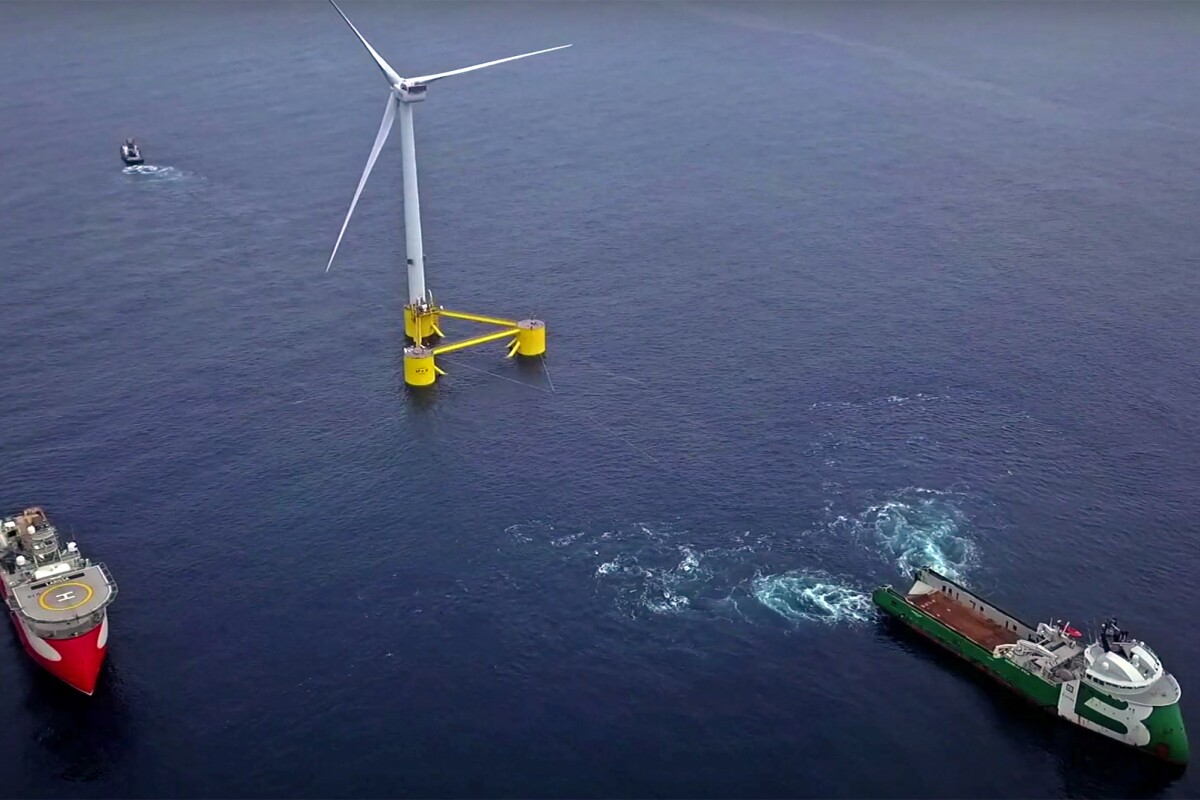By Joe Salas
September 05, 2024

One of three Windfloat Atlantic off-shore floating platforms
Windplus
VIEW GALLERY - 3 IMAGES
The WindFloat Atlantic project – the world's first semi-submersible floating offshore wind farm, located off the coast of Portugal with only three turbines – has exceeded expectations over the last four years of operation, generating a total of 320 GWh of electricity. That's enough to power about 25,000 homes each year.
Fully connected to the grid and commissioned in 2020, the wind farm is made up of three floating platforms with an 8.4-MW Vestas turbine on each. The semi-submerged platforms are anchored to the sea floor – 328 ft (100 m) below the surface – with chains to keep them from floating away and are connected to an electrical substation in Viana do Costelo, Portugal, via a 12.4-mile (20-km) cable.
In 2022, the project produced 78 GWh, while 2023 saw even better figures, making 80 GWh of electricity.
Vestas is known for making huge turbines with high power-generation capacities. The turbines used in the Windfloat Atlantic project have a diameter of 538 ft (164 m), with the blade tips whipping around as fast as 232 mph (373 km/h), kicking out a modest 66,000 volts DC. The nacelle alone weighs 375 tons (340 tonnes), making it the world's largest offshore wind turbine.
A closer look at the Windfloat Atlantic semi-submersible platform, with people for scale
Windplus
Semi-submersible floating wind farms offer the unique advantage of being able to be placed in waters that are too deep for traditional bottom-fixed turbines, which are only feasible for waters about 150-200 ft (50-60 m) deep. And as you get further from shore, winds tend to be stronger and more consistent, making the turbines more efficient at harnessing wind power than their land-based counterparts. Given the partially submerged, three-pronged nature of the platforms with active ballast systems, they are more stable in rougher seas, also upping their efficiency.
Windfloat Atlantic project semi-submersible platform compared to the Torre dos Clerigos tower, which stands at 246 ft (75 m) tall. Miniscule, compared to the 679 ft (207 m) turbine
Windplus
Between 2011 and 2016, the Windfloat Atlantic project put a 2-MW prototype out to sea where it generated electricity for five uninterrupted years, even having survived through extreme weather conditions like 69 mph (111 km/h) winds and 55-ft (17-m) waves unscathed, paving the way for its full-scale 25-MW installation.
In 2023, the Windfloat Atlantic survived a particularly bad storm with 86-mph (139-km/h) winds and 65-ft (20-m) waves, proving how robust the off-shore electricity-generating system is.
Source: Windfloat Atlantic
No comments:
Post a Comment